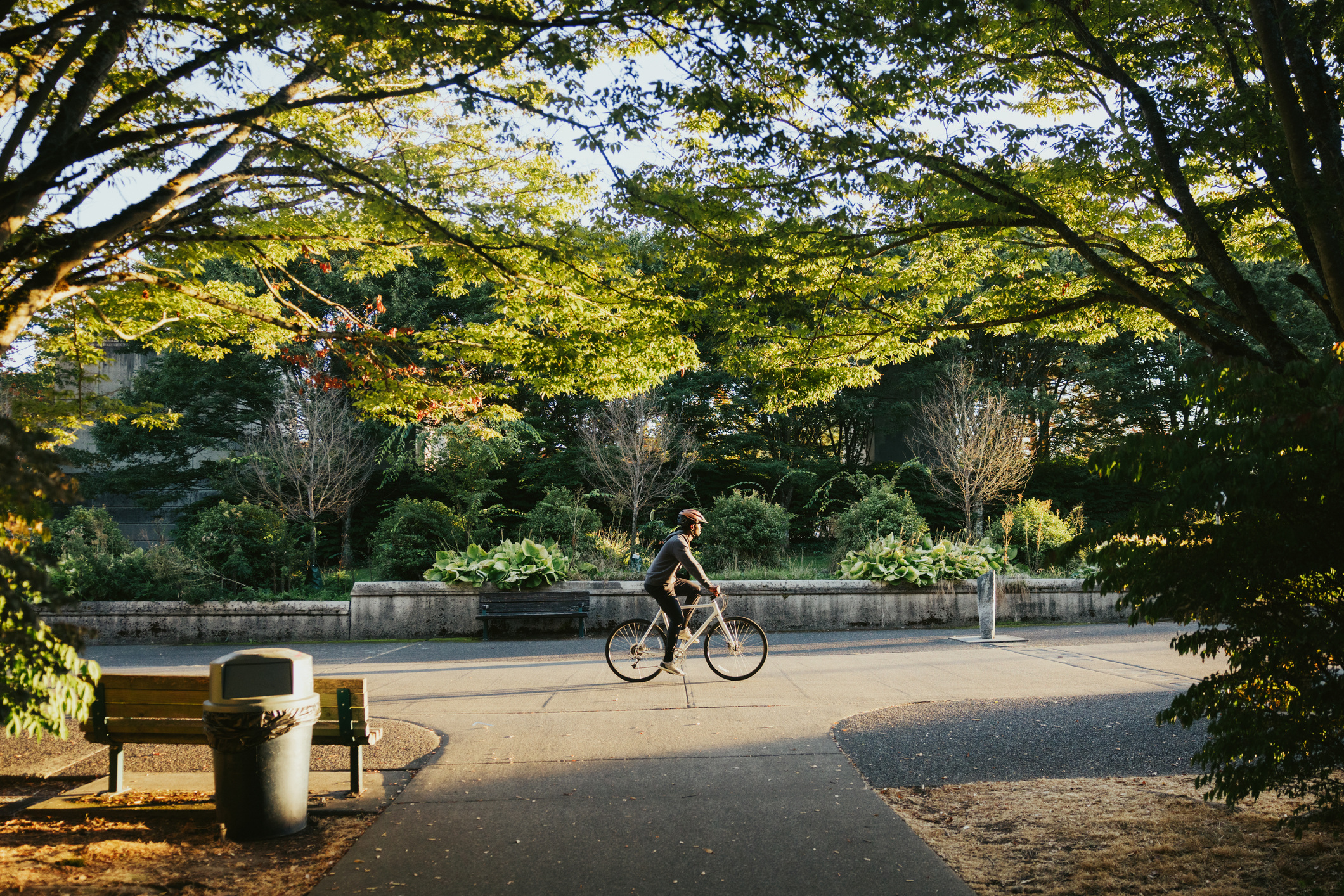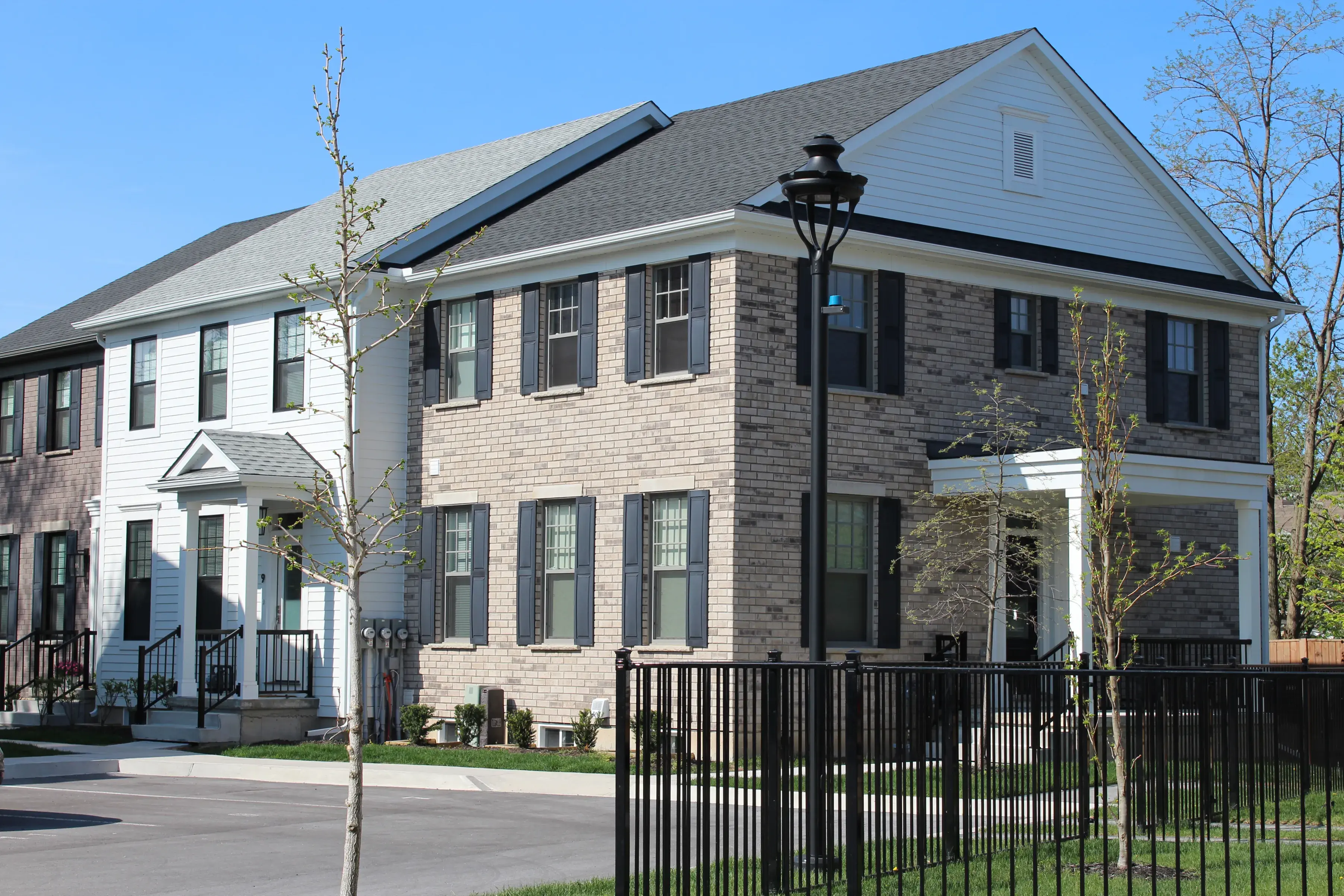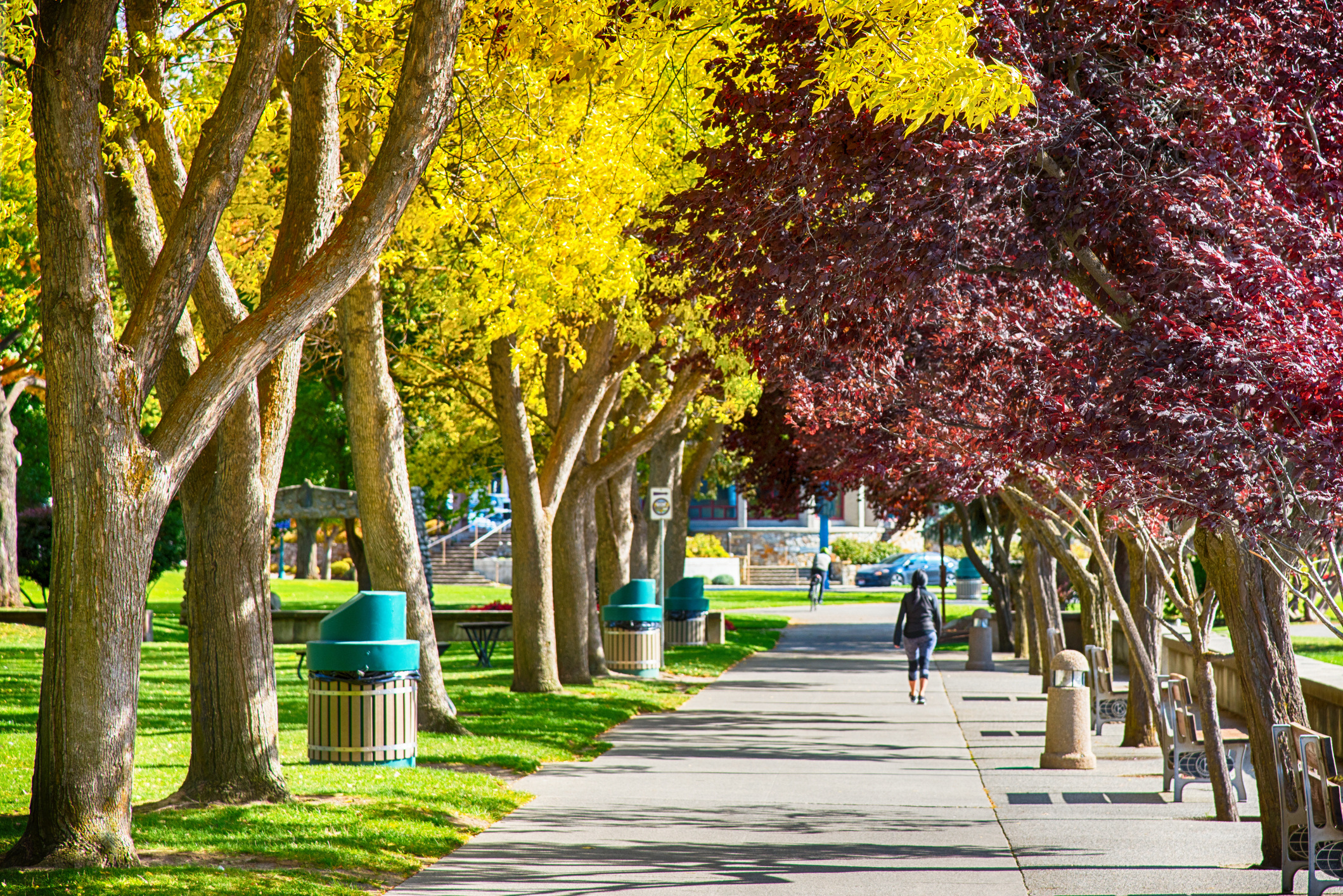Green Urbanism: Bringing Native Trees & Plants to the City for Healthier Living

With over 80 percent of Canadians living in cities and urban populations growing at unprecedented rates, there’s an urgent demand for additional housing. However, traditional residential developments aimed at providing affordable housing often result in the destruction of green spaces. This leads to higher temperatures, increased flooding (exacerbated by climate change) and harm to natural ecosystems and biodiversity. That’s why there’s a movement towards green solutions. Cities are introducing more native trees and plants, revitalizing green spaces within urban environments. These initiatives are vital for fostering healthy urban development. Keep reading to learn how Elevate Living is making a difference in our developments and why these efforts are crucial for our communities.
What are Green Spaces?
According to the World Health Organization, green spaces include “all urban land covered by vegetation of any kind.” This encompasses trees lining streets, parks, landscaping around buildings, sports fields, flowerbeds, ponds, green entryways, green roofs and individual plants. These spaces offer numerous benefits, from long-term financial gains to social and environmental advantages. Green spaces can also be purposefully designed to help wildlife at-risk of extinction. By simply planting a few native trees and plants you can provide essential habitats for at-risk monarch butterflies, bees and birds. As cities and homeowners, we have the power to control what plants are introduced into our building landscaping, parks, medians and other common areas. In large areas, this can make a huge difference, adding up to thousands or even tens of thousands of acres of home for local wildlife. Let’s look at some examples of positive change in New York, Delaware and Pennsylvania. In 2018, County Executives in both Westchester County, NY, and New Castle, DE, signed executive orders mandating that all county parks and landscaping around county buildings include 100 percent native plants. Nearby in Pennsylvania, the Township of Lower Makefield passed an amendment to the Subdivision and Land Development provisions, requiring 100 percent use of native plants in new developments.
Growing Woodlands in a City: Urban Forestry
When you think of an urban forest, what comes to mind? Tree lined streets? Parks filled with lush greenery? According to Erik Jorgensen, who coined the term in 1974, urban forestry is “a specialized branch of forestry” focused on managing trees for their contributions to the well-being of urban society. These contributions include improving the environment, providing recreational spaces and enhancing the overall look of our cities. Frederick Deneke expanded this definition in 1993: “Urban forestry is the sustained planning, planting, protection, maintenance and care of trees, forests, greenspace and related resources in and around cities and communities for economic, environmental, social and public health benefits for people.” This includes preserving trees as urban areas expand into rural regions and restoring critical parts of the environment after construction. While definitions continued to evolve, they all agreed, urban forestry was about maintaining and protecting urban trees while managing a rapidly changing city landscape.
Why is Urban Forestry Important?
By 2050, 68 percent of the world’s population, more than 6.5 billion people, will live in urban areas. These people will need a liveable environment, which means includes having access to clean air. Right now, over 90 percent of the world’s population lives in cities where air quality fails to meet the World Health Organization’s standards. Additionally, human-induced climate change is widespread and intensifying. Urban forests can help resolve each of these issues and more. Just one large, mature canopy tree can absorb about 22 pounds of carbon dioxide annually. In the same year, it will produce 6,000 pounds of oxygen and absorb 1,000 gallons of rainwater, all while improving community aesthetics and increasing property values. Imagine the impact of planting more than one tree!
10 Benefits of Urban Forests and Green Spaces
1. Reduces Flooding
Climate change is causing more frequent and intense rainfall in some spots, increasing the risk of floods. However, permeable, natural surfaces found in green spaces offer a solution. They allow water to seep into the ground, reducing the total amount and slowing the rate of runoff. This helps prevent wastewater and stormwater systems from overflowing. Tree and shrub root systems also make it easier for water to penetrate the soil and soak up large amounts of water. This improves water filtration and reduces stormwater runoff, reducing the risk of flooding in urban areas.
2. Supports Biodiversity
Urban forestry benefits wildlife and helps preserves biodiversity. Connected urban forests create corridors for plants and animals to move safely and find shelter. This is especially important as climate change shifts habitats and urban areas expand. By providing these corridors, urban forests allow species to thrive in areas where they might not otherwise survive.
3. Trees Clean the Air
Trees play a vital role in improving air quality, especially in urban environments where pollution from transportation systems is common. These pollutants, linked to serious health issues like cancer, asthma, strokes, lung disease and heart attacks can be mitigated by urban tree planting. Tree leaves can trap particulate matter, which can then be washed away by rain, reducing air pollution. Trees also absorb carbon dioxide from the atmosphere, releasing oxygen in exchange, providing us with an actual breath of fresh air.
4. Reduces Greenhouse Gases
Urban forestry benefits the planet. Between 1990 and 2018 urban trees removed an average of 2.4 million metric tons of greenhouse gases (GHGs) per year, according to the National Inventory. Urban forests also contribute to GHG emissions by lowering the need for air conditioning in nearby buildings. Similarly, green spaces contribute to mitigating climate change by influencing behaviour and reducing GHGs. In cities, increasing the number of plants and trees in green spaces allows for the absorption of carbon dioxide through photosynthesis. Additionally, green spaces indirectly reduce GHG emissions by encouraging more residents to walk or bike. When neighbourhoods are designed to be more walkable or bike-friendly, more people choose these modes of transportation, thereby reducing emissions from cars and other vehicles that consume fuel.
5. Provides Green Jobs
Introducing green spaces and urban forests also brings forth green jobs. These roles require trained professionals to care for plants and trees, ensuring their long-term health and vitality. On average, every dollar spent on maintaining these green spaces adds value ranging from $1.88 and $12.70, depending on the city. This approach not only addresses environmental challenges but also creates employment opportunities and enhances local economies – a triple win!
6. Increases Property Value
Trees and green spaces are essential elements of vibrant neighbourhoods. Studies have demonstrated their impact, revealing that even a small amount of greenery can go a long way. For instance, in the United States, research indicates that streets adorned with trees can increase property values by as much as 18 percent compared to similar areas lacking trees. Beyond enhancing property worth, green spaces elevate the overall community value, creating a more welcoming atmosphere that attracts more visitors and fosters a positive perception of the area.
7. Offers a Sense of Calm
Urban forestry benefits our well-being. As humanity evolved alongside trees, we subsequently developed a deep connection to nature that promotes relaxation. These green spaces are enhancing mental and physical health by reducing heart rates, blood pressure and the incidence of obesity, asthma and diabetes. In his book Into the Forest, Dr. Qing Li argues that trees and green spaces in urban areas are just as crucial as those found in rural settings, offering city dwellers respite from the hustle and bustle of urban life. Li cites several studies that highlight the importance of trees in our surroundings. For example, research by Peter Ulrich revealed that hospital patients with views of green spaces and trees recovered faster than those with views of brick walls. Another study linked the decline of ash trees due to the emerald ash borer beetle with higher mortality rates, particularly from cardiovascular disease, in affected neighbourhoods.
8. Mitigates the Heat
The average annual temperature in Canada has risen at about twice the global average rate. This increase is primarily due to the catastrophic effects of climate change, exacerbated by urban heat islands. Urban heat islands occur when cities replace natural land cover with dense surfaces like pavement and buildings, which absorb and trap heat. This leads to higher energy costs, increased air pollution and more heat-related illnesses and deaths. Urban forests and green spaces play a central role in mitigating this effect. Trees engage in transpiration, a process where water absorbed from the soil moves up through the roots, branches and leaves. When sunlight heats the leaves, the water evaporates into the air, creating a cooling effect that lowers local temperatures. This reduces energy consumption in buildings and helps cities adapt to climate change. Additionally, trees provide shade, further cooling their surroundings.
9. Minimizes Noise Pollution
Urban areas frequently contend with noise pollution, a growing concern for many cities and towns. Fortunately, the solution is within reach. Planting trees and shrubs can effectively reduce noise levels by five to 10 decibels for every 30 metres of woodland, especially for high-pitched sounds, resulting in approximately 50 percent noise reduction. Achieving optimal noise reduction requires careful consideration of plant species and design. Choosing plants with dense foliage is essential and diversifying with a mix of foliage shapes and sizes can further enhance noise reduction capabilities. Incorporating taller plants is preferable, although in areas where urban tree planting is restricted, combining shorter shrubs, tall grasses or similar soft ground cover instead of hard paved surfaces can also contribute significantly to mitigating noise pollution.
10. Creates Sustainable Communities
Urban forestry and green spaces play a central role in advancing green urbanism, an approach to city planning that prioritizes sustainability. This method aims to create eco-friendly cities by minimizing waste and emissions, advocating for the development of green spaces, using sustainable building materials and supporting electric transportation. By addressing challenges like urban sprawl, pollution and inadequate mobility, green urbanism is counteracting the negative impacts plaguing urban spaces. Its overarching objective is to reduce energy consumption, water usage and material waste through the entire lifecycle of urban areas and neighbourhoods. Additionally, green urbanism promotes social sustainability and fosters healthy communities. It emphasizes the importance of local neighbourhoods and places a high priority on creating public green spaces like parks, as well as revitalizing existing urban areas rather than initiating new developments. These efforts aim to enhance the quality of life while ensuring environmental stewardship for future generations.
Rebuilding the Carolinian Forest, One Native Plant At a Time
With Ontario’s rapid population growth and industrial expansion, many forests, along with their vegetation and wildlife, have been affected. Take the Carolinian Forest, for example. Many of its trees are gone, leaving only 30 percent of this deciduous forest intact. Spanning parts of the United States and Ontario, including the Niagara Region, this unique area is known for its rich biodiversity, distinctive plant species and wildlife. It’s home to one-third of Canada’s at-risk plants and animals and a quarter of our human population. It features plant species found nowhere else, such as tall tulip trees, majestic oaks and vibrant wildflowers. The forest also supports diverse wildlife, including birds like the scarlet tanager and eastern bluebird and mammals like the white-tailed deer and eastern cottontail rabbit. The Carolinian Forest provides essential ecosystem services like water and air purification, climate regulation and habitats for countless species. Due to its ecological importance, conserving and restoring the forest while promoting sustainable coexistence is crucial. Green spaces and urban forestry are vital in rebuilding this important forest. As developers in the Carolinian Life Zone, we recognize our responsibility to restore this lost habitat and ensure its future. At Warbler Place Urban Village, we are dedicated to planting native and Carolinian species to replenish what’s been lost. These trees and plants will provide canopy cover, clean air and joy for residents and visitors alike. It’s our way of giving back to the planet, practicing sustainability and ensuring the Carolinian Forest can continue to serve as a place of ecological importance.
Learn More About How We’re Creating Sustainable Communities: Contact Us Today
At Elevate Living we’re not just constructing developments; we’re shaping a better future for our communities. We prioritize sustainability and the well-being of both residents and the planet. By implementing initiatives such as urban tree planting and reintroducing native plant species from the Carolinian Forest in our projects, we aim to create a meaningful impact. Get in touch with us today to discover how we’re embracing green urbanism in each of our developments in Niagara.


